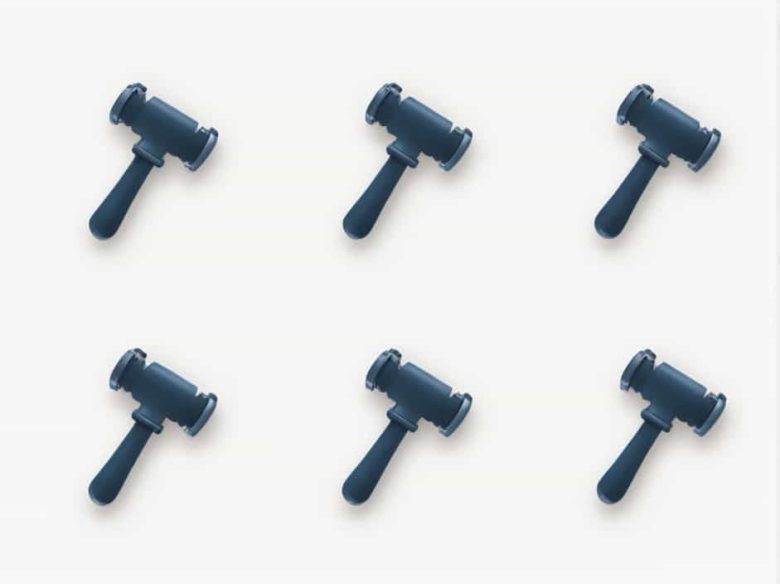A hammer is a common hand tool used in construction metalworking and woodworking. One of its essential parts is the peen which plays a crucial role in shaping and striking materials. This topic will explain the location and function of the peen on a hammer different types of peen hammers and their uses.
What Is the Peen of a Hammer?
The peen (also spelled “pein”) is the end of a hammerhead opposite the striking face. It is designed for specialized tasks such as shaping metal riveting or spreading materials. The shape of the peen varies depending on the type of hammer and its intended use.
Location of the Peen on a Hammer
The peen is located on the back side of the hammerhead opposite the flat striking surface. While the front face is used for direct impact the peen is often shaped to perform specific tasks such as bending spreading or shaping materials.
Types of Peen Hammers and Their Uses
1. Ball Peen Hammer
- Features a rounded peen opposite the flat face.
- Commonly used in metalworking for shaping metal rounding edges and riveting.
- The rounded peen helps spread the head of a rivet to create a secure joint.
2. Cross Peen Hammer
- Has a wedge-shaped peen that is perpendicular to the handle.
- Useful for blacksmithing and metal fabrication as it allows for controlled shaping and stretching of metal.
- Often used by jewelers and craftsmen for delicate work.
3. Straight Peen Hammer
- Similar to the cross peen hammer but with the peen aligned parallel to the handle.
- Helps in directing force along a straight line useful for shaping and drawing out metal.
4. Claw Hammer (Not a Peen Hammer)
- The claw hammer is commonly used in carpentry but does not have a peen.
- Instead it features a curved claw for pulling out nails.
Functions of the Peen in a Hammer
The peen of a hammer serves several important functions:
1. Metal Shaping
- In blacksmithing the peen helps in spreading and shaping metal by delivering controlled blows.
- The rounded peen of a ball peen hammer allows for smooth and even shaping.
2. Riveting
- When working with rivets the peen helps expand the rivet head to create a secure joint.
- This technique is widely used in automotive shipbuilding and metal fabrication industries.
3. Texturing Surfaces
- The peen can be used to create textured surfaces on metal adding grip or aesthetic appeal.
- This is often done in jewelry making and decorative metalwork.
4. Spreading Metal
- The peen is useful for flattening and spreading metal over a surface.
- This is essential in shaping tools armor and other metal objects.
How to Use a Peen Hammer Safely
When using a hammer with a peen it is important to follow safety precautions:
1. Wear Safety Gear
- Use safety glasses to protect your eyes from flying metal fragments.
- Wear gloves to reduce the risk of blisters and hand injuries.
2. Maintain a Firm Grip
- Hold the hammer securely with a comfortable grip to maintain control.
- Avoid excessive force as this can lead to slips and misstrikes.
3. Use the Right Hammer for the Task
- Choose the appropriate type of peen hammer for your specific work.
- A ball peen hammer is ideal for metal shaping while a cross peen hammer is better for directional shaping.
4. Inspect the Hammer Before Use
- Ensure that the hammerhead is firmly attached to the handle.
- Look for any cracks or damage that may affect performance and safety.
Common Mistakes When Using a Peen Hammer
Many beginners make mistakes when using a peen hammer. Here are some common errors to avoid:
1. Using the Wrong Peen Type
- Different peens serve different functions. Using a ball peen for a task meant for a cross peen can lead to poor results.
2. Striking Too Hard
- Excessive force can damage the material or cause loss of control. Controlled precise strikes are more effective.
3. Ignoring Safety Precautions
- Not wearing protective gear increases the risk of injury. Always prioritize safety.
The peen of a hammer is an essential tool feature used for shaping riveting and spreading metal. It is located opposite the striking face and comes in various shapes depending on its intended function. Whether you are a metalworker blacksmith or DIY enthusiast understanding how to use a peen hammer properly can improve efficiency and safety.



